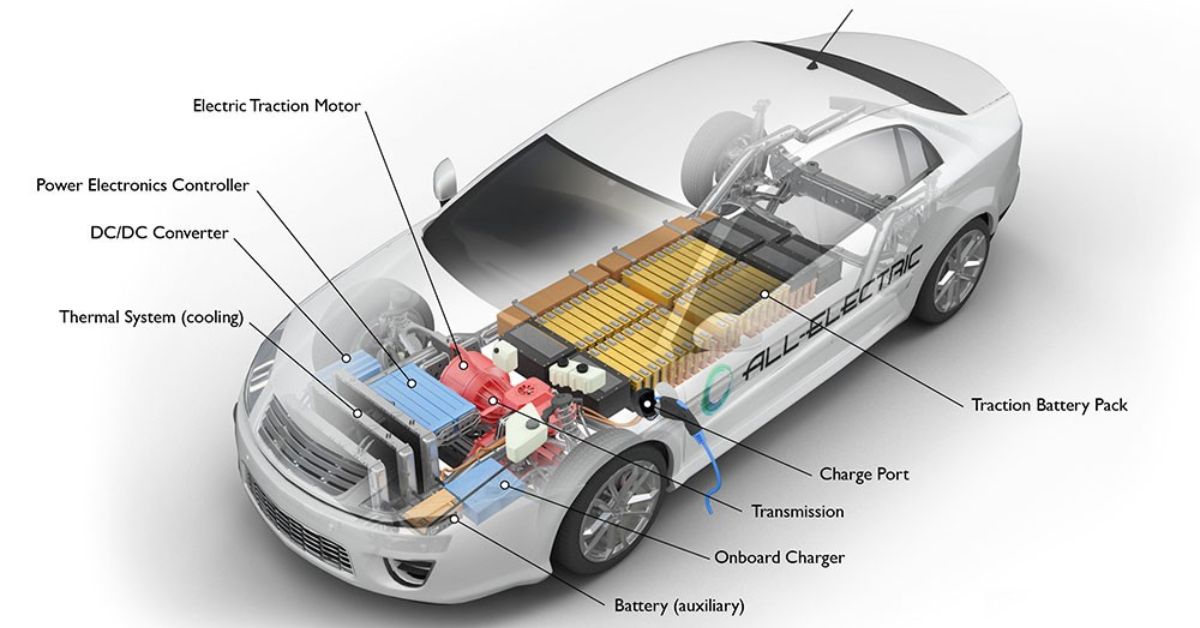Every year, Wards Auto releases its prestigious list of the 10 Best Engines & Propulsion Systems, a celebration of innovation, performance, and engineering excellence. In 2025, the list tells a compelling story: hybrids are no longer the transitional technology—they’re the main event.
This year’s lineup is dominated by electrified powertrains, with hybrids and EVs claiming eight of the ten spots. It’s a clear signal that the automotive industry is embracing a more nuanced approach to electrification, one that balances performance, efficiency, and practicality. While some enthusiasts may lament the fading roar of naturally aspirated V-8s, the 2025 list offers plenty to be excited about.
The Electrified Elite: Who Made the Cut?
Let’s start with the winners. Wards doesn’t rank the powertrains, instead recognizing all ten equally. Here’s the full list:
- BMW M5 — 4.4L Turbocharged V-8 Plug-in Hybrid
- Chevrolet Corvette ZR1 — 5.5L Twin-Turbo V-8
- Dodge Charger Daytona — Electric Propulsion System
- Ford F-150 — 3.5L Turbocharged V-6 Hybrid (2024 returning winner)
- Honda Civic Hybrid — 2.0L I-4 Hybrid (2024 returning winner)
- Hyundai Ioniq 9 — Electric Propulsion System
- Lexus LX 700h — 3.4L Turbocharged V-6 Hybrid
- Lucid Gravity — Electric Propulsion System
- Mercedes-AMG E53 — 3.0L Turbocharged I-6 Plug-in Hybrid
- Nissan Leaf — Electric Propulsion System
Five of these are hybrids, three are fully electric, and only two feature traditional V-8 combustion engines—one of which is a plug-in hybrid. It’s a dramatic shift from the lists of previous decades, which were often dominated by high-revving V-6s and V-8s.
Why Hybrids Are Winning
The rise of hybrids on Wards’ list reflects broader industry trends. As Christie Schweinsberg, manager of the Wards 10 Best awards program, explains, “US consumers are more than ever embracing electrification, namely in the form of hybridization.”
Hybrids offer a sweet spot: they reduce emissions and improve fuel economy without the range anxiety or charging infrastructure challenges of full EVs. For many automakers, hybrids are the most practical way to meet tightening emissions regulations while still delivering performance and versatility.
Take the Ford F-150 Hybrid, for example. It’s a returning winner that proves electrification doesn’t mean sacrificing utility. The truck’s 3.5L turbocharged V-6 hybrid system delivers impressive towing capacity and fuel efficiency, making it a favorite among both fleet buyers and weekend warriors.
Similarly, the Honda Civic Hybrid continues to impress with its balance of affordability, efficiency, and refinement. It’s a reminder that hybrid technology isn’t just for luxury vehicles—it’s becoming mainstream.
EVs Hold Their Ground
While hybrids dominate, EVs are still well represented. The Lucid Gravity, Hyundai Ioniq 9, Dodge Charger Daytona, and Nissan Leaf showcase the diversity of electric propulsion systems—from luxury SUVs to performance sedans and affordable compacts.
The Dodge Charger Daytona is particularly noteworthy. It’s a bold attempt to electrify the muscle car segment, blending aggressive styling with cutting-edge EV technology. It’s not just about saving fuel—it’s about redefining what performance means in an electric age.
The V-8s: Endangered but Not Extinct
Only two V-8s made the list this year, and one of them—the BMW M5—is a plug-in hybrid. The other, the Chevrolet Corvette ZR1, features a 5.5L twin-turbo V-8 that delivers raw, unfiltered power. It’s a nod to tradition in a rapidly changing landscape.
While the presence of V-8s is shrinking, their inclusion on the list shows that there’s still room for high-performance combustion engines—at least for now. But the writing is on the wall: electrification is the future, and even performance icons like the M5 are adapting.
What This Means for the Industry
Wards’ 2025 list is more than just a roundup of great engines—it’s a snapshot of where the industry is headed. Automakers are investing heavily in electrified powertrains, not just to meet regulations but to satisfy evolving consumer preferences.
Hybrids are no longer a compromise; they’re a compelling choice for drivers who want efficiency without giving up performance. EVs are gaining ground, especially in premium and urban segments. And traditional combustion engines, while still admired, are increasingly rare.
This shift has implications for everything from vehicle design to infrastructure planning. Charging networks, battery supply chains, and software integration are becoming as important as horsepower and torque.
Final Thoughts
The 2025 Wards 10 Best Engines & Propulsion Systems list is heavy on hybrids—and that’s not a bad thing. It reflects a maturing industry that’s learning to balance innovation with practicality. Whether you’re a die-hard gearhead or a tech-savvy commuter, there’s something on this list for you.
As we move into an era of electrified mobility, lists like these help us understand not just what’s under the hood, but what’s driving the future.

